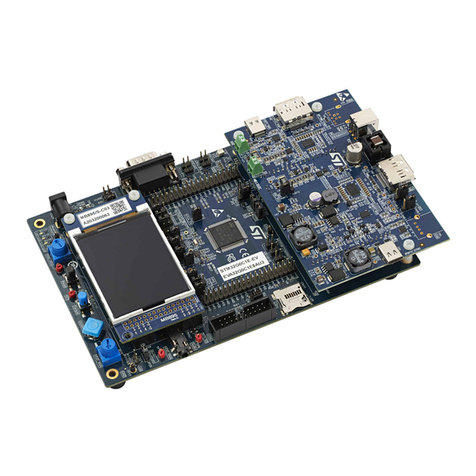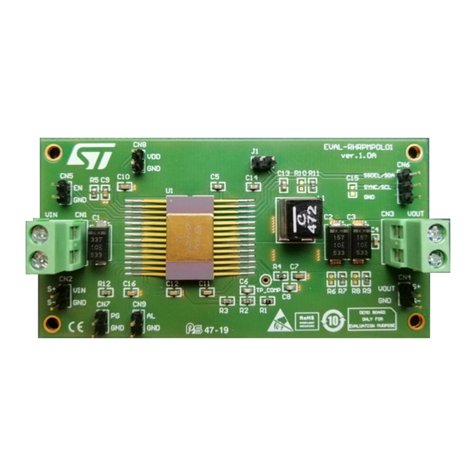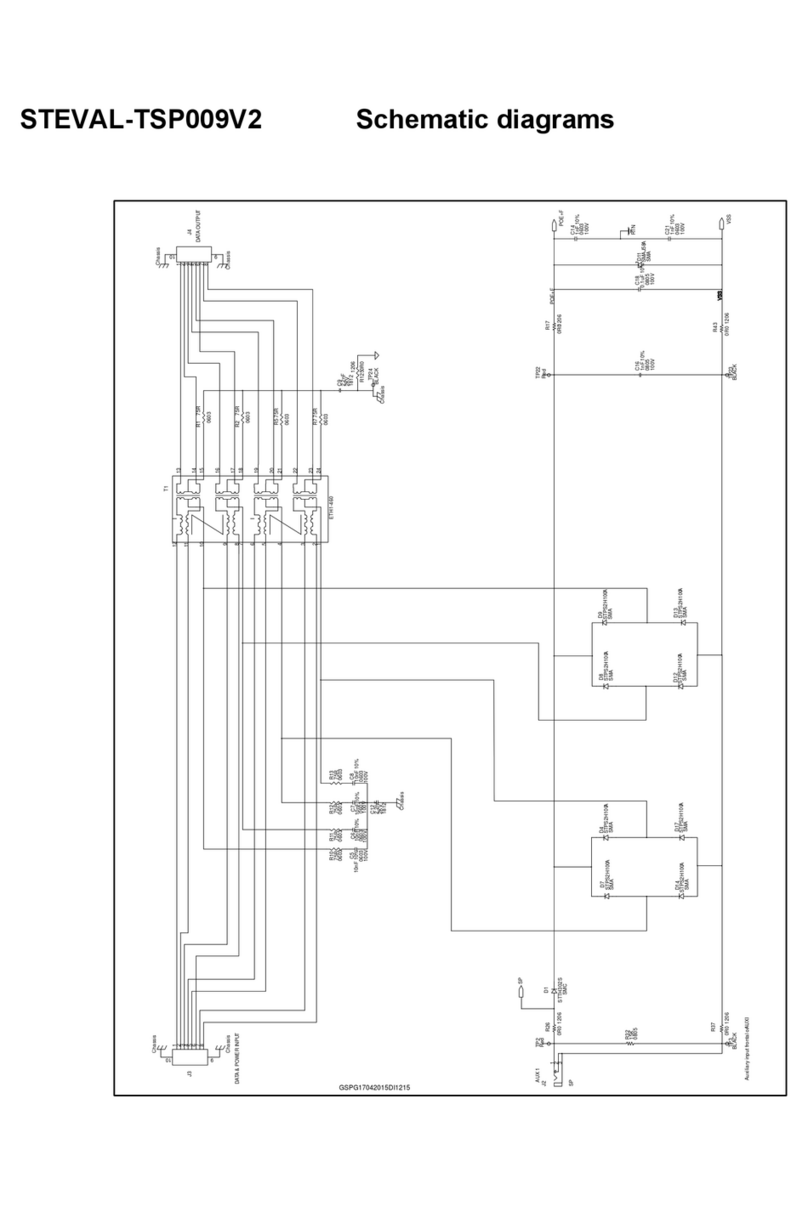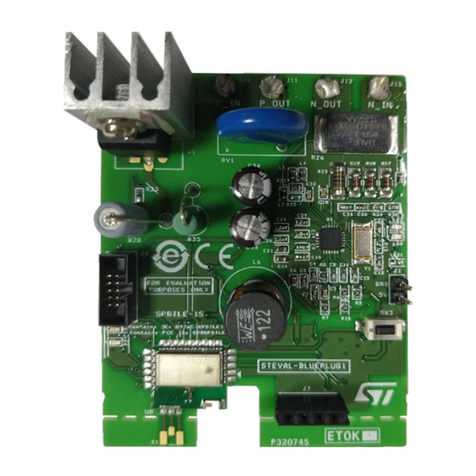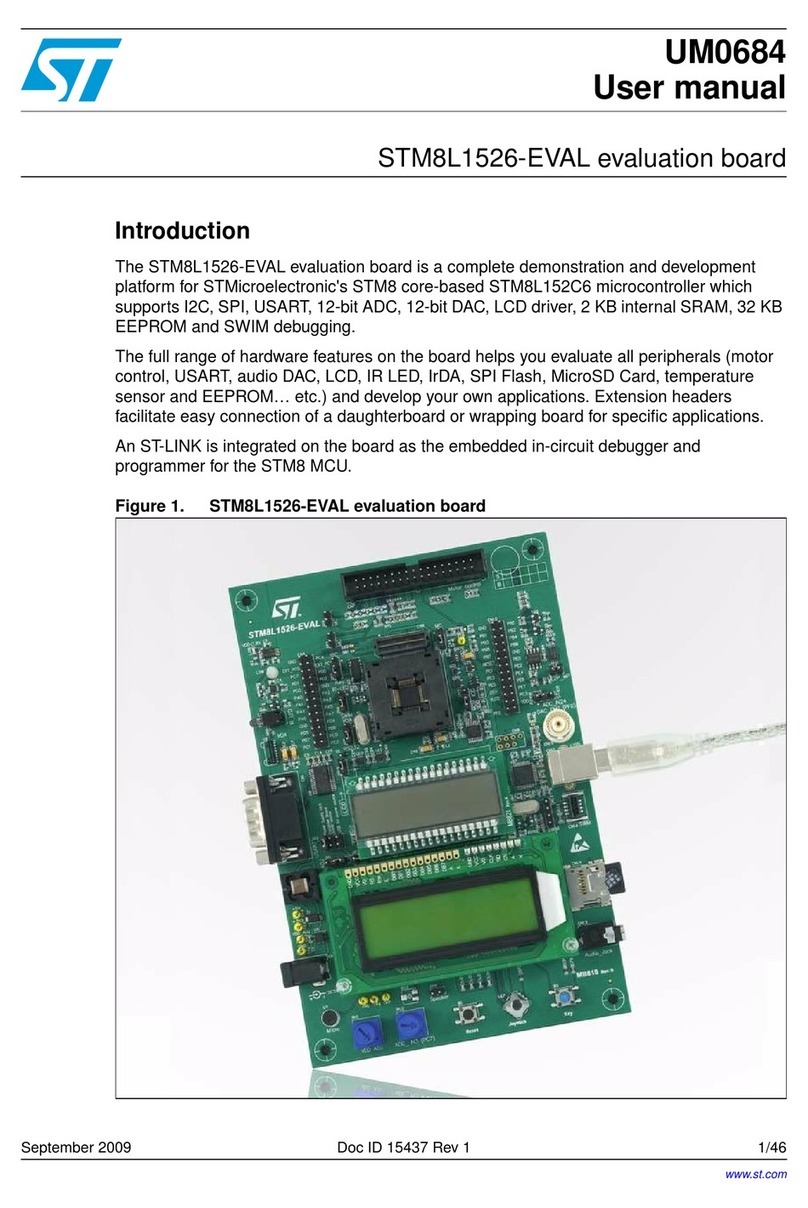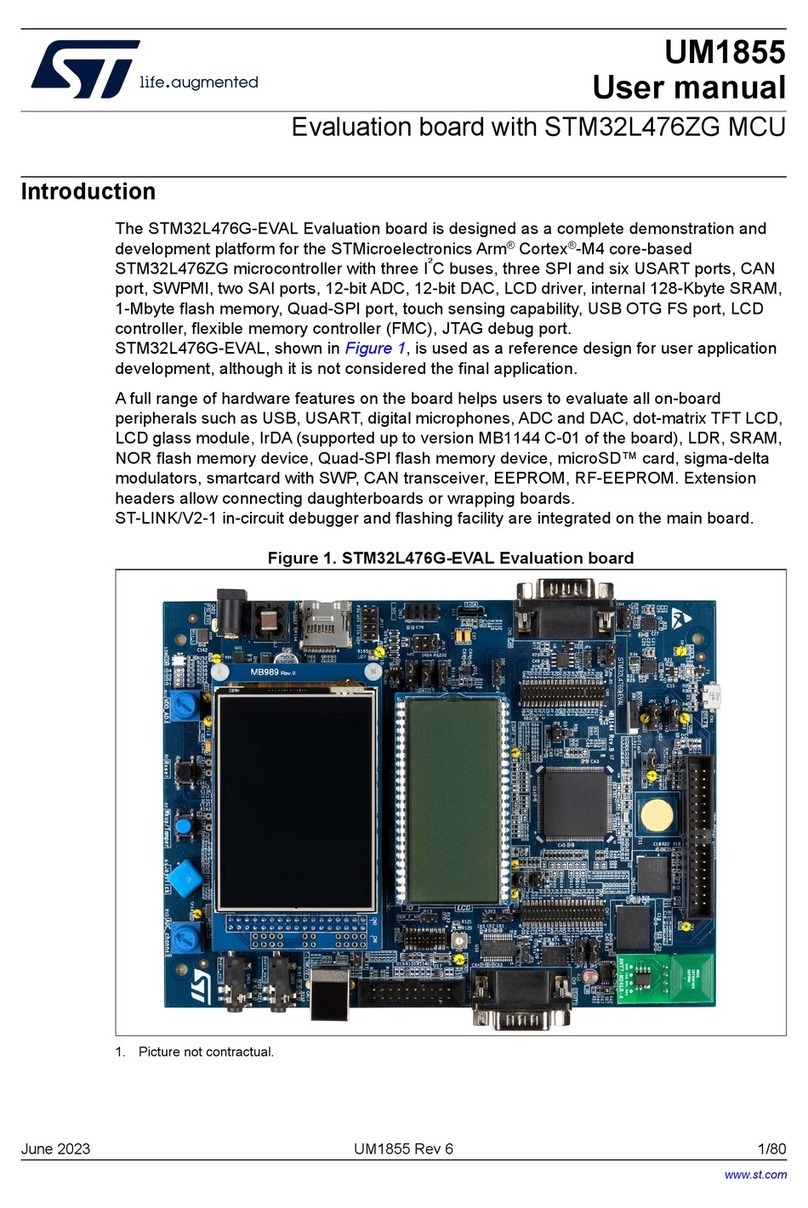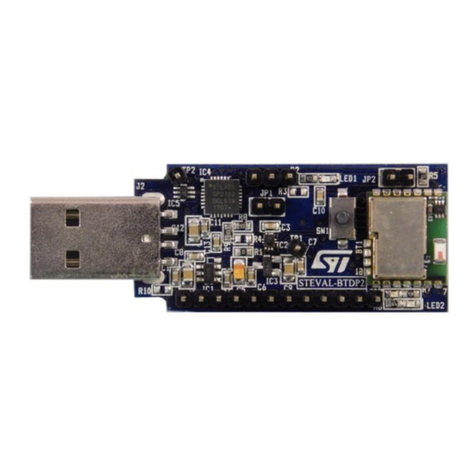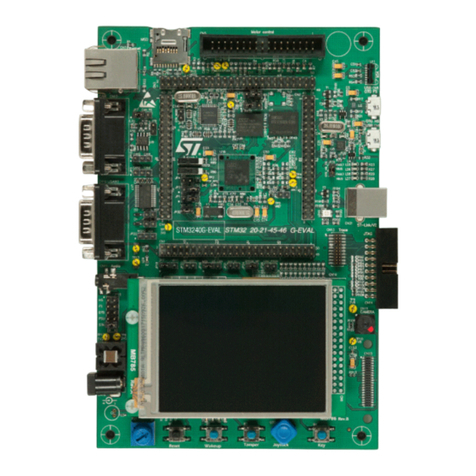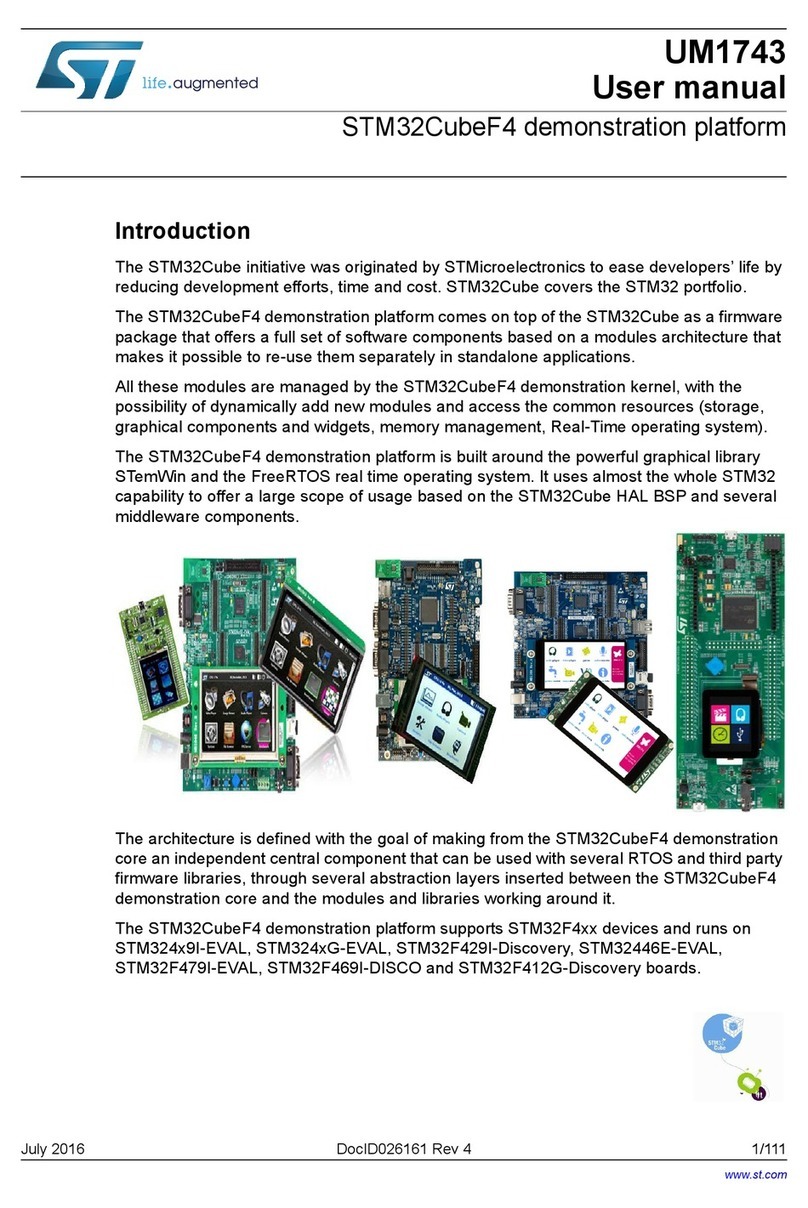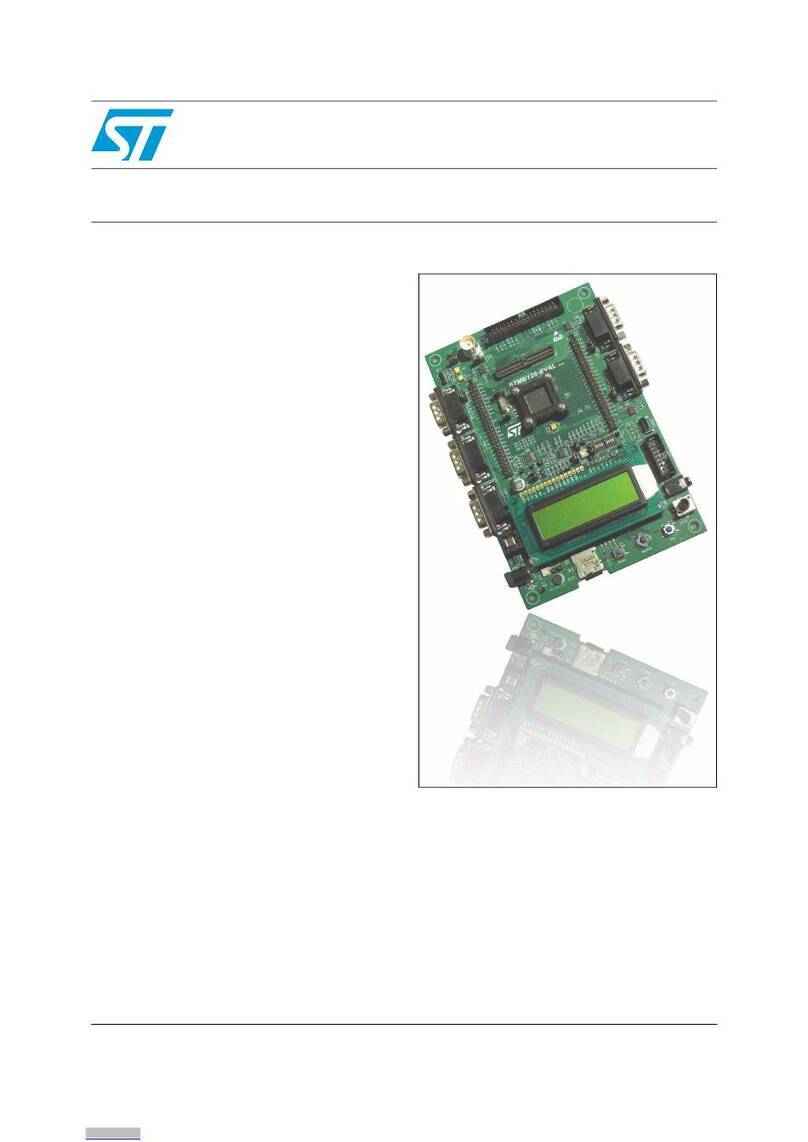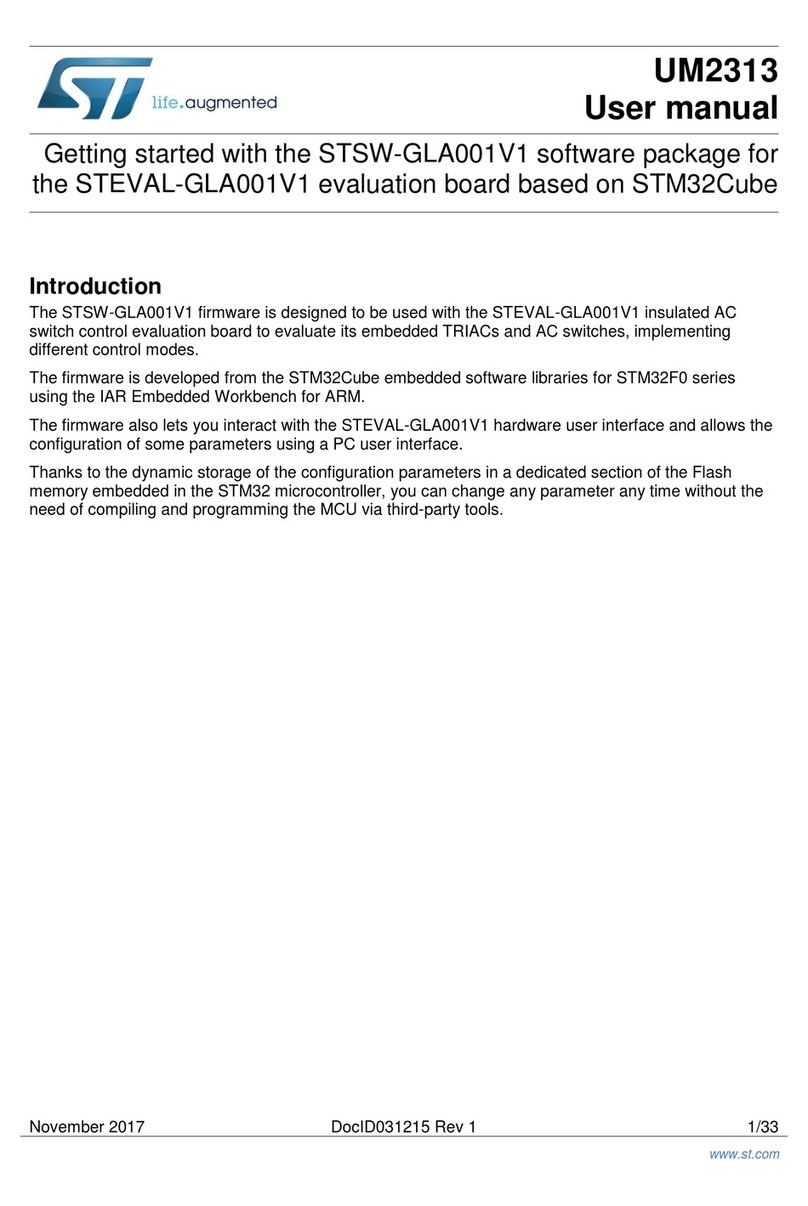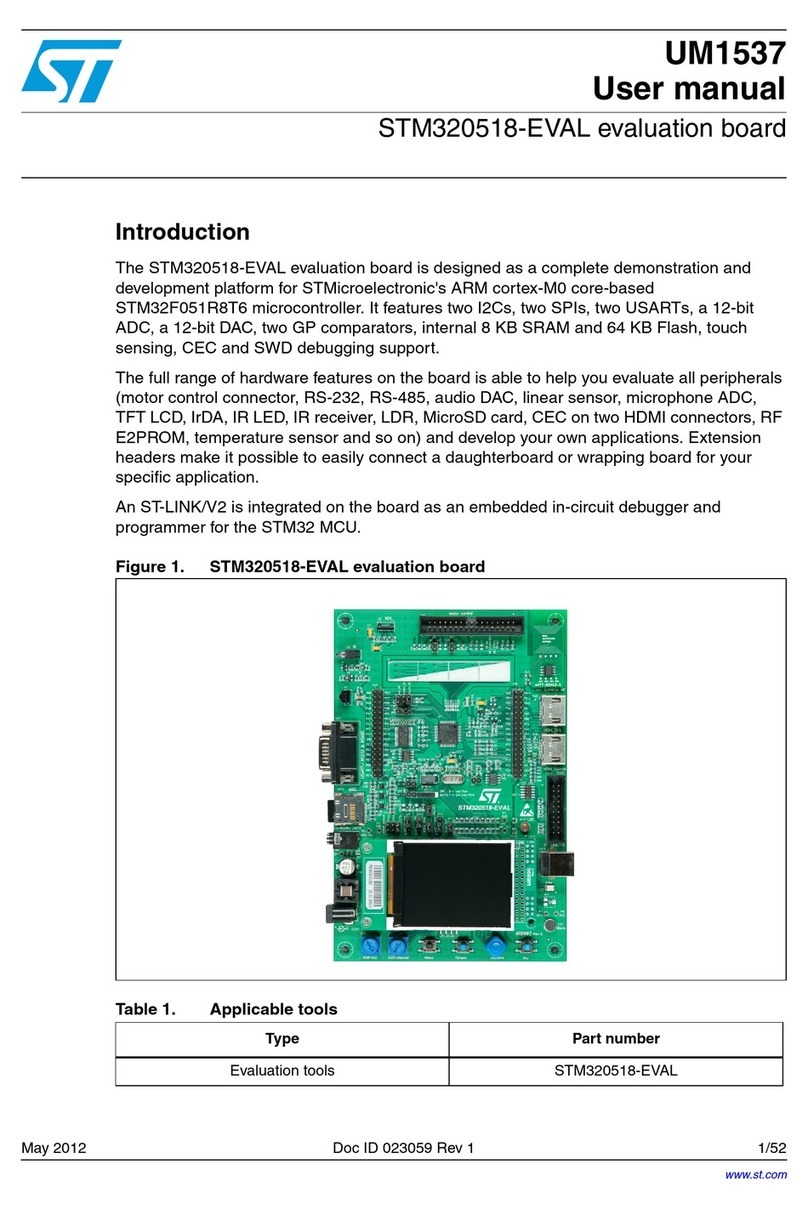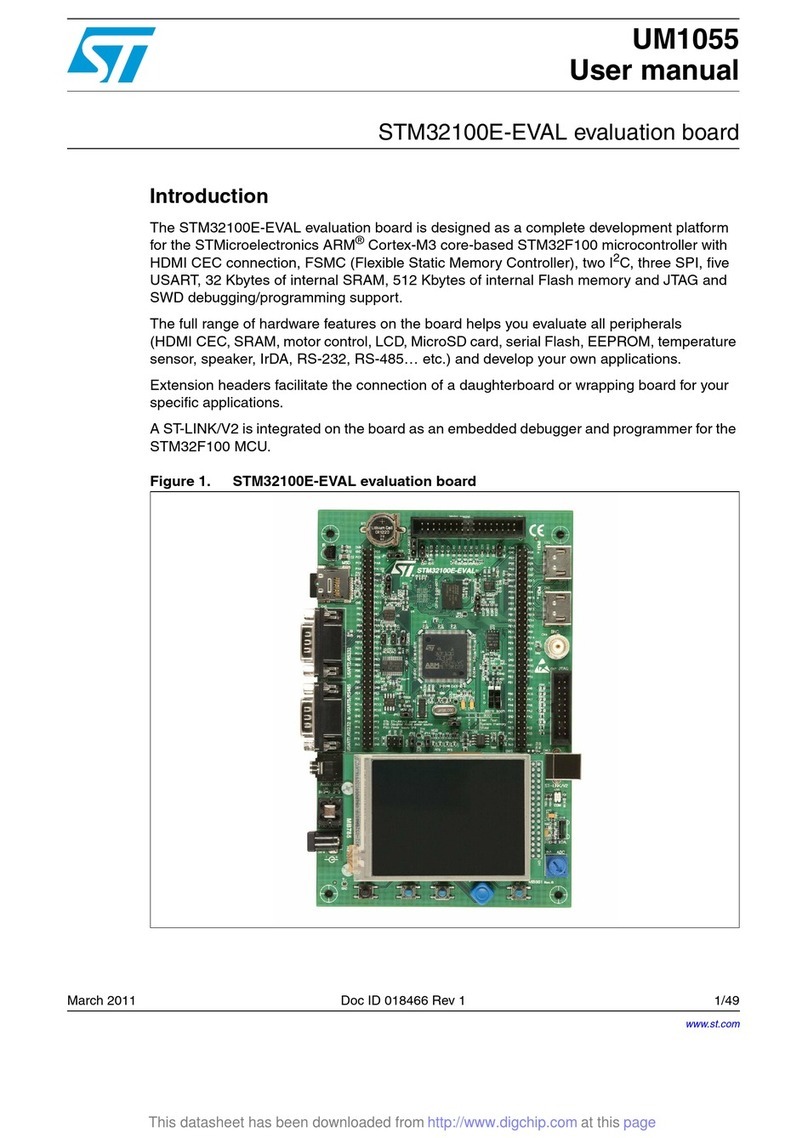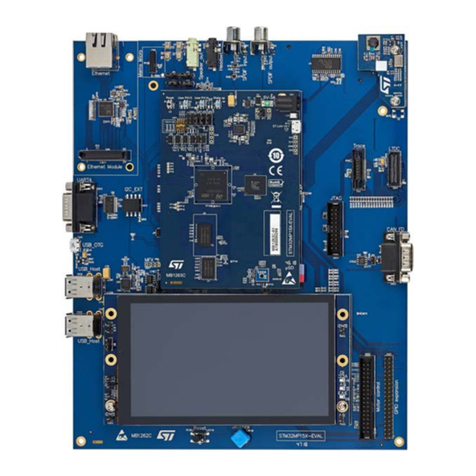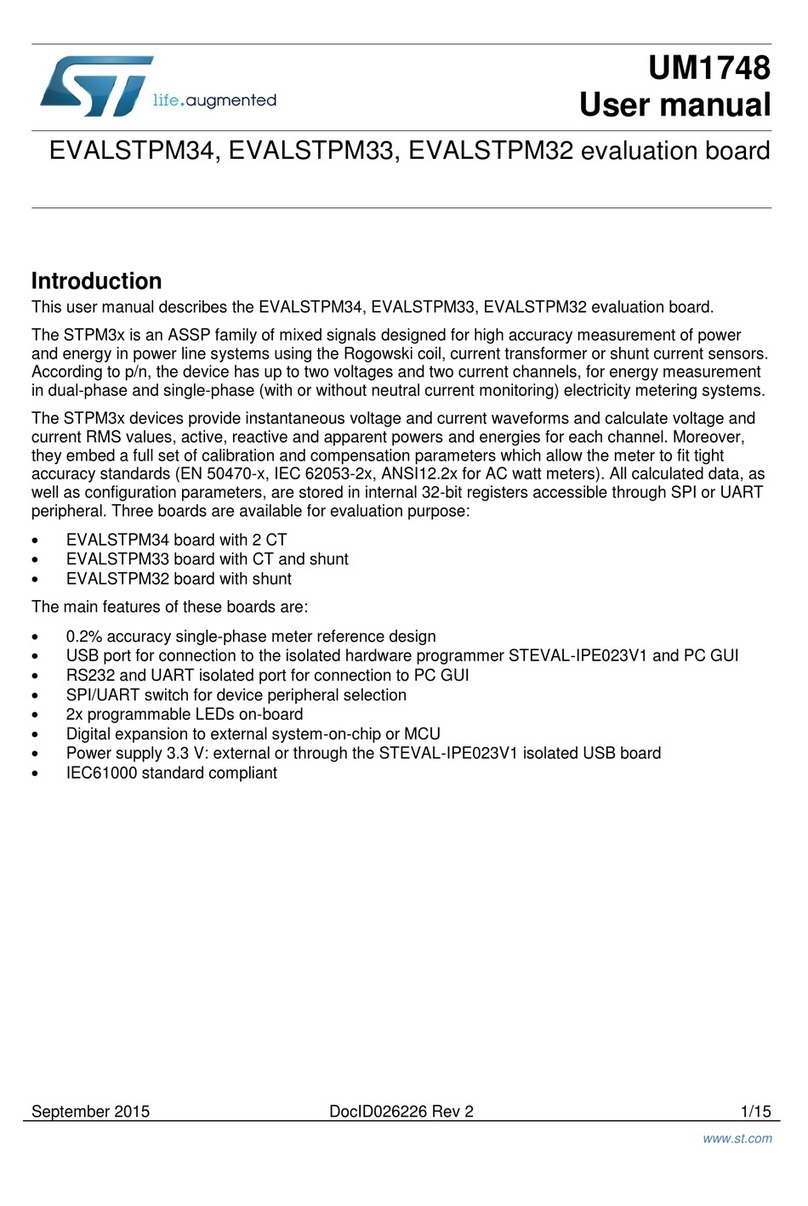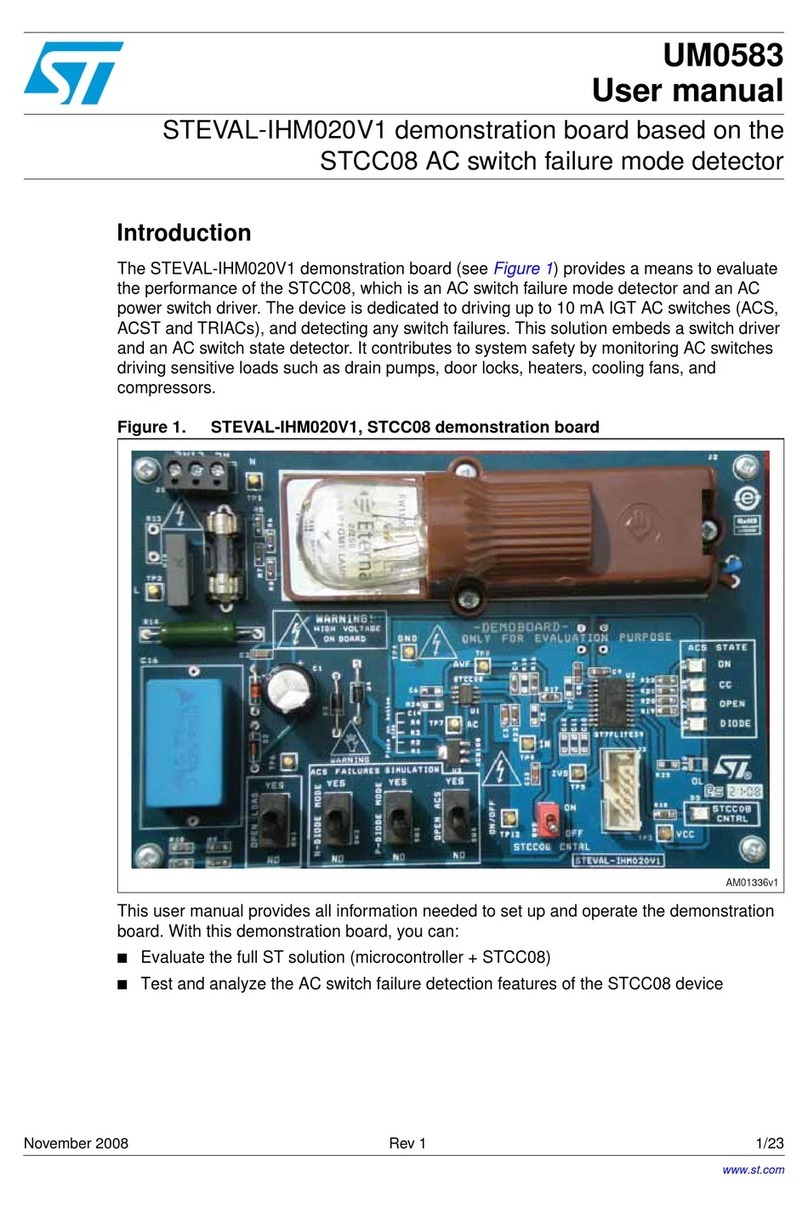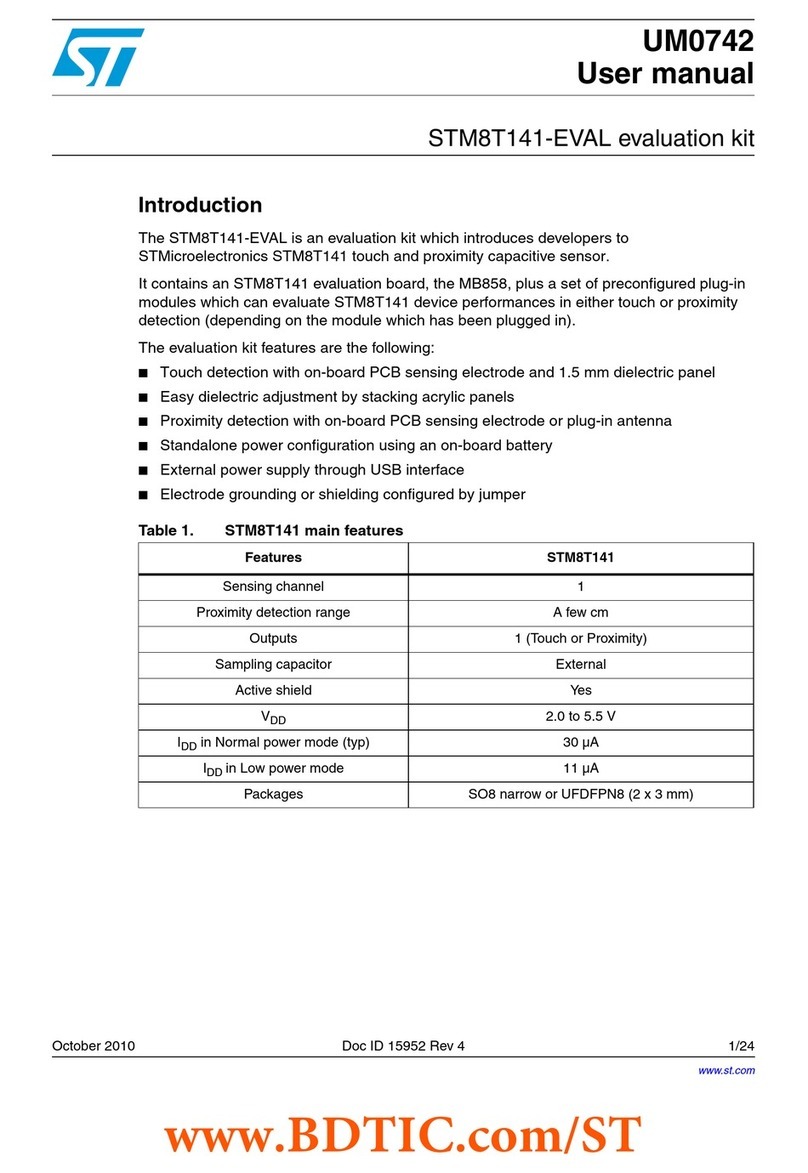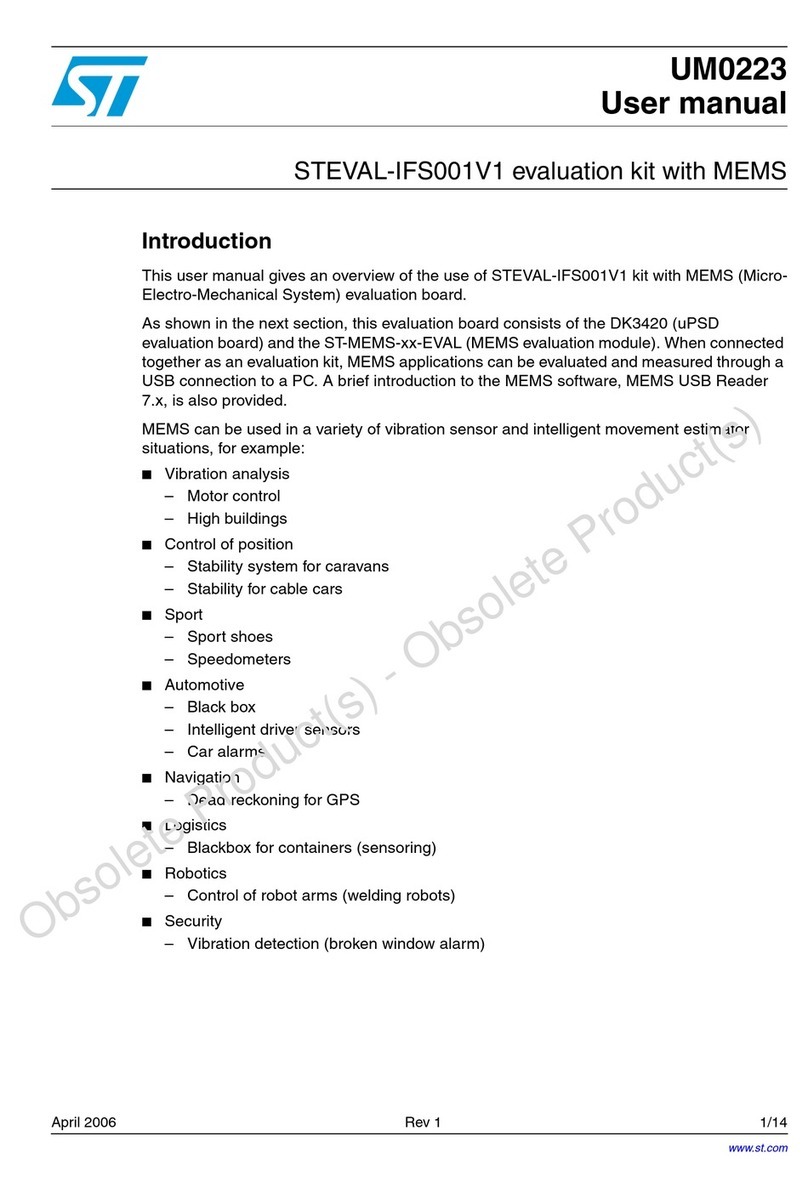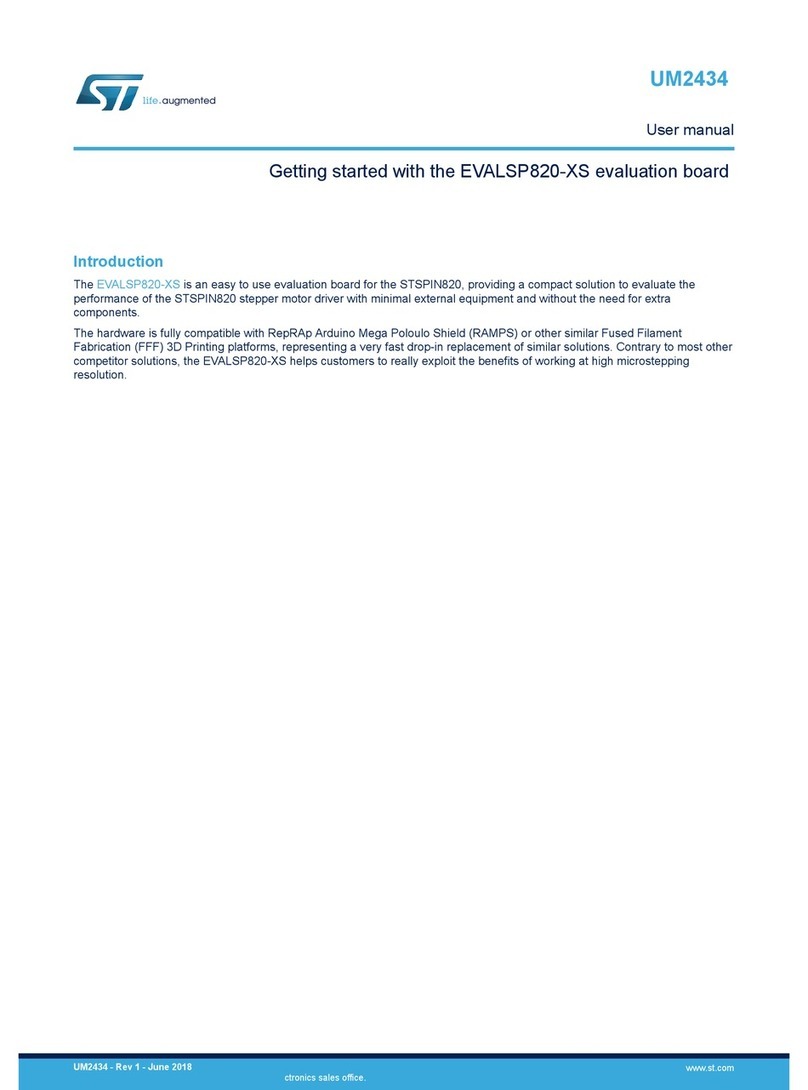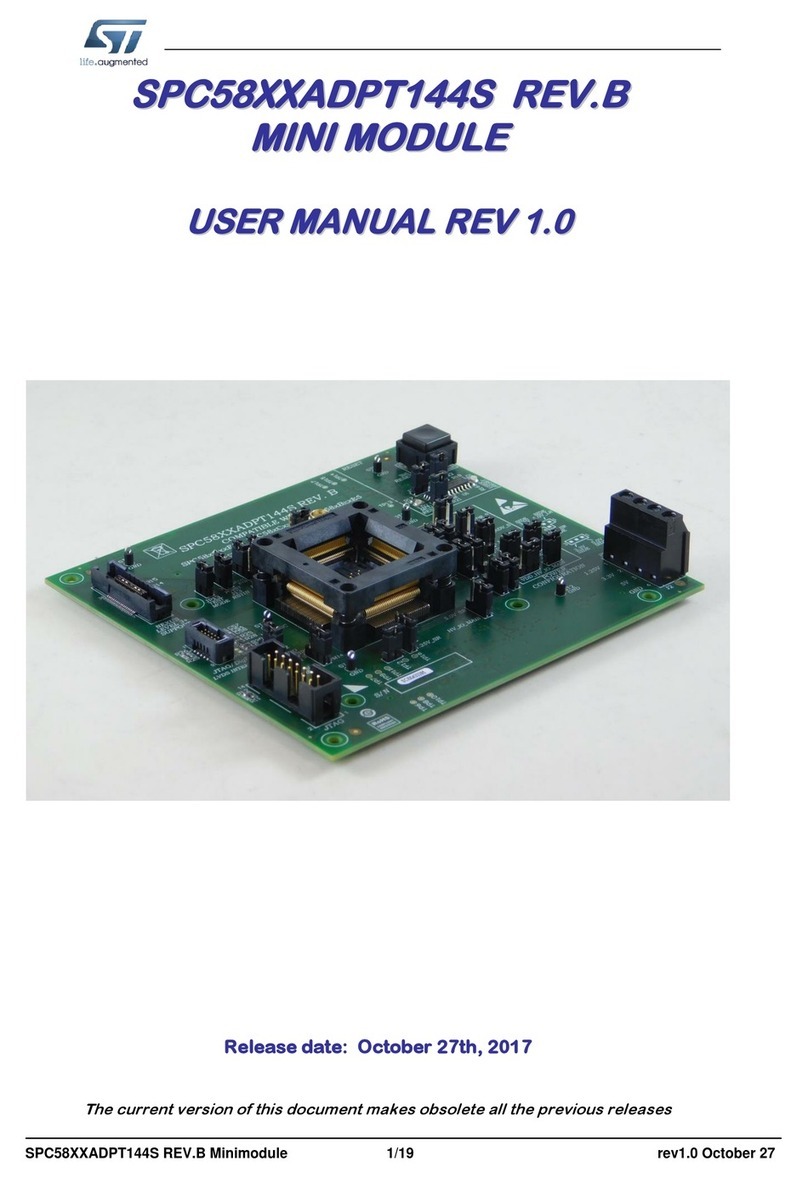
Getting started AN4594
6/16 DocID026958 Rev 1
2.2.1 STM32Cube
STM32Cube is a development framework which provides tools and libraries to develop C
applications on STM32 series platforms. A full description of the STM32Cube framework
can be found at http://www.st.com/stm32cube.
STM32Cube comprises the STM32CubeF4platform which includes the STM32Cube HAL
(the STM32 abstraction layer embedded software which maximizes portability across
STM32 portfolio), plus a consistent set of middleware components (such as RTOS, USB,
FatFS and STM32 touch sensing). All embedded software utilities come with a full set of
examples.
All the generic embedded software components required to develop an application on
STM32F4 microcontrollers are gathered by STM32CubeF4 in a single package.
STM32CubeF4 is fully compatible with the STM32CubeMX code generator for initialization
code. The package includes a low level hardware abstraction layer (HAL) that covers the
microcontroller hardware, together with an extensive set of examples running on
STMicroelectronics boards. The HAL is available in open-source BSD license for developer
convenience.
The STM32CubeF4 firmware and related documentation is available on st.com at
http://www.st.com/web/en/catalog/tools/PF259243
2.2.2 Firmware for STM32 Nucleo with X-NUCLEO-IKS01A1 expansion board
X-CUBE-MEMS1 is a package that contains firmware with the STM32 Cube framework that
is compatible with the STM32 Nucleo and the X-NUCLEO-IKS01A1 boards. It has sample
applications that can be used to obtain data from the sensors on the expansion board. The
same sample applications are referenced in further sections of this document.
The firmware and related documentation are available on st.com at
http://www.st.com/x-nucleo.
2.3 Hardware and software setup
This section describes hardware and software setup procedure for writing applications
based on the sensor expansion board. It also describes the system setup needed for the
above.
2.3.1 Hardware setup
The following hardware is required:
1. One STM32 Nucleo development platform (suggested order code: NUCLEO-F401RE)
2. One sensor expansion board (see Figure 1, order code: X-NUCLEO-IKS01A1)
3. One USB type A to mini-B USB cable to connect the Nucleo to the PC
2.3.2 Software setup
This section lists the minimum requirements for the developer to setup the SDK, run the
sample testing scenario based on the GUI utility and customize applications.
